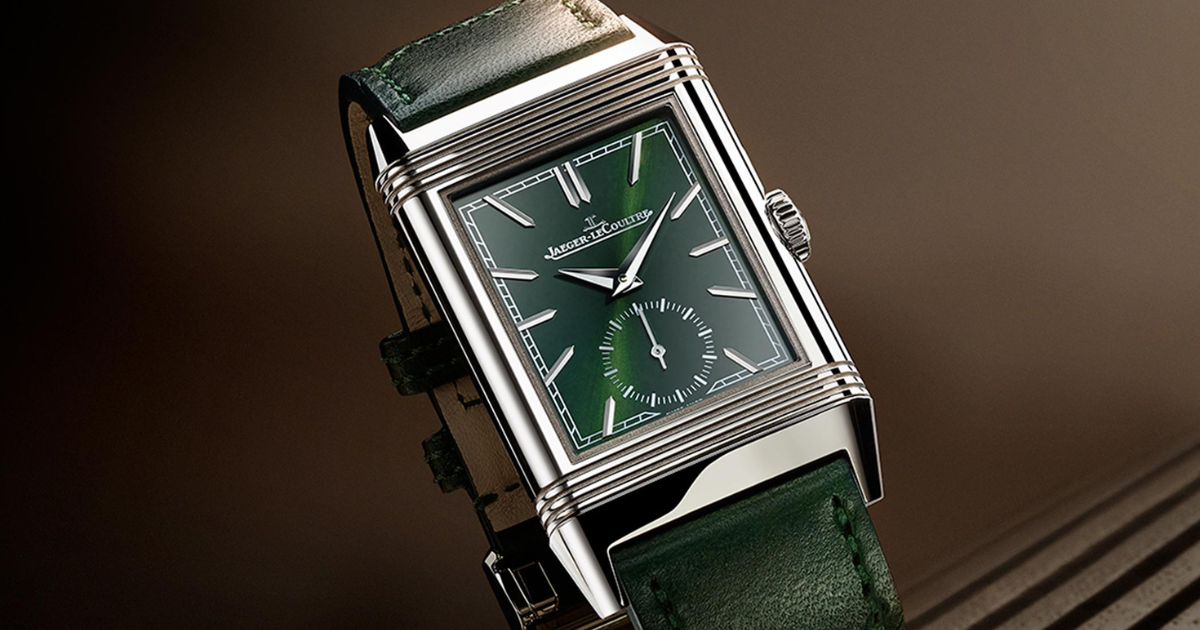Watch Guides
Exploring GMT Watches: Functionality and Style
GMT watches, or Greenwich Mean Time watches, are timepieces designed to display multiple time zones simultaneously. They feature an additional hand or a separate subdial that indicates a second time zone, often referred to as the GMT hand. This functionality is especially useful for travelers, pilots, and those who frequently communicate or work across different time zones.
The primary purpose of a GMT watch is to track the time in two different regions at once. The GMT hand can be set independently from the main timekeeping mechanism, allowing users to easily reference the time in another time zone without adjusting the main hour and minute hands.
In recent years, GMT watches have gained significant popularity among travelers and watch enthusiasts for their practicality and versatility. They offer a convenient way to stay connected with different time zones, making them ideal companions for frequent flyers, business professionals, and anyone who values precise timekeeping across the globe. Additionally, many luxury watch brands have introduced GMT models with sophisticated designs and advanced features, further contributing to their appeal among collectors and aficionados.
History of GMT Watches
GMT watches have a rich history rooted in aviation and the need for pilots to track multiple time zones accurately. The concept of a GMT watch dates back to the 1950s when Pan American World Airways (Pan Am) collaborated with Rolex to develop a timepiece specifically for their pilots. This collaboration led to the creation of the Rolex GMT-Master, introduced in 1954, which became one of the iconic GMT watches in history.
One of the key milestones in GMT watch technology was the introduction of the 24-hour rotating bezel by Rolex on the GMT-Master. This feature allowed pilots to track a third time zone by aligning the bezel with the GMT hand, significantly enhancing the watch’s functionality.
Over time, other watchmakers joined the GMT watch market, introducing their own innovations and improvements. For example, in 1982, Casio released the first quartz-powered GMT watch, the Casio TC-7, which offered high accuracy and reliability.
The 1990s and early 2000s witnessed advancements such as the introduction of ceramic bezels, improved movement technology for enhanced accuracy, and the integration of additional complications like date displays and chronograph functions into GMT watches.
In recent years, GMT watches have seen a surge in popularity, leading to further innovations such as:
- Enhanced materials: Many brands now use materials like ceramic, titanium, and carbon fiber to improve durability and reduce weight.
- Increased water resistance: GMT watches are being designed with higher water resistance ratings, making them suitable for a wide range of activities, including diving.
- Innovative movement technology: Watchmakers have developed new GMT movements with increased power reserves, improved accuracy, and additional functions like multiple time zone tracking.
Understanding GMT Functionality
GMT watches display multiple time zones through a combination of specialized features, typically including an additional GMT hand or a dedicated subdial. Here’s how they work:
- GMT Hand: Most GMT watches have an extra hand on the dial that completes one rotation every 24 hours. This hand is independently adjustable from the main hour and minute hands. It’s often marked with a 24-hour scale, allowing users to track a second time zone.
- Rotating Bezel: Some GMT watches feature a 24-hour rotating bezel. Users can set the bezel to align with the GMT hand, effectively tracking a third time zone. This method is commonly found in vintage GMT watches like the Rolex GMT-Master.
- Dedicated Subdial: Instead of a GMT hand, certain GMT watches utilize a dedicated subdial to display the second time zone. The subdial typically includes a 24-hour scale and an additional hand pointing to the corresponding hour in the second time zone.
As for the difference between GMT, UTC, and other timekeeping terms:
- GMT (Greenwich Mean Time): GMT is a time standard originally based on the mean solar time at the Royal Observatory in Greenwich, London. It’s often used as a reference time for coordinating activities across different time zones. However, since GMT doesn’t account for daylight saving time, it’s sometimes replaced by Coordinated Universal Time (UTC).
- UTC (Coordinated Universal Time): UTC is a more precise time standard that accounts for leap seconds and is based on atomic timekeeping. It’s often used interchangeably with GMT but is technically more accurate and is the primary standard for global timekeeping in various fields, including aviation, telecommunications, and computing.
- DST (Daylight Saving Time): DST is a practice of advancing clocks during the warmer months to extend evening daylight and save energy. It’s typically observed in regions where seasonal changes in daylight hours are significant. During DST, local time is temporarily adjusted forward by one hour, affecting the offset from GMT or UTC.
- Time Zones: Time zones are geographical regions that follow a standardized time offset from UTC or GMT. Each time zone is usually defined by its difference in hours and minutes from UTC. For example, Eastern Standard Time (EST) in the United States is UTC-5 during standard time and UTC-4 during daylight saving time.
GMT watches are designed to help users navigate these complexities by providing a convenient way to track multiple time zones accurately, regardless of DST changes or global time standards.
Popular GMT Watch Brands
Here are some renowned watchmakers known for their GMT watch collections, along with brief profiles and notable GMT models from each brand:
- Rolex:
- Brief Profile: Rolex is one of the most iconic and prestigious Swiss watch brands, known for its precision, durability, and timeless designs. The brand has a rich heritage in aviation and was instrumental in popularizing GMT watches with the Rolex GMT-Master in 1954.
- Notable GMT Models: Rolex GMT-Master II, Rolex GMT-Master II “Pepsi” (with red and blue bezel), Rolex GMT-Master II “Batman” (with blue and black bezel), Rolex GMT-Master II “Root Beer” (with brown and black bezel).
- Omega:
- Brief Profile: Omega is a Swiss luxury watchmaker renowned for its technological innovations, quality craftsmanship, and strong ties to space exploration (Omega Speedmaster was the first watch on the moon). The brand’s GMT watches combine style and functionality.
- Notable GMT Models: Omega Seamaster Planet Ocean GMT, Omega Seamaster Aqua Terra GMT, Omega Seamaster GMT “Great White” (with white dial and bezel).
- Breitling:
- Brief Profile: Breitling is a Swiss watch brand known for its aviator and diver watches, characterized by robustness, precision, and aeronautical influences. Breitling’s GMT watches are designed for professional use and offer exceptional performance.
- Notable GMT Models: Breitling Navitimer GMT, Breitling Avenger II GMT, Breitling Chronomat GMT.
- TAG Heuer:
- Brief Profile: TAG Heuer is a Swiss watch brand with a strong legacy in motorsports and precision timekeeping. Known for its sporty and innovative designs, TAG Heuer’s GMT watches blend functionality with style.
- Notable GMT Models: TAG Heuer Carrera GMT, TAG Heuer Aquaracer GMT, TAG Heuer Formula 1 GMT.
- Panerai:
- Brief Profile: Panerai is an Italian luxury watch brand famous for its distinctive designs, robust construction, and deep-rooted maritime heritage. Panerai’s GMT watches often feature bold aesthetics and exceptional water resistance.
- Notable GMT Models: Panerai Luminor GMT, Panerai Radiomir GMT, Panerai Submersible GMT.
These brands are esteemed for their contributions to the world of horology, and their GMT watch collections showcase a blend of innovation, functionality, and exquisite craftsmanship, making them highly sought-after by watch enthusiasts and collectors worldwide.

Features to Look for in a GMT Watch
Dual time zone display options in watches offer various ways to track multiple time zones simultaneously. Here are some common methods along with additional complications that are often integrated into watches:
- 24-Hour Hand: This is a dedicated hand on the dial that completes one full rotation every 24 hours, typically marked with a 24-hour scale. It points to the hour in a second time zone, allowing users to easily read both local time and the time in another zone.
- Rotating Bezel: A 24-hour rotating bezel can be adjusted to align with the GMT hand or a 24-hour scale on the dial. By setting the bezel to a specific time zone, users can track a second time zone alongside the main hour and minute hands.
- Dedicated Subdial: Some watches feature a separate subdial to display the time in a second time zone. The subdial includes an additional hour hand or indicator pointing to the corresponding hour in the secondary time zone.
- Digital Displays: Digital watches or hybrid analog-digital watches can display multiple time zones digitally. These watches often allow users to switch between different time zone displays with the push of a button.
As for additional complications commonly found in watches:
- Date Display: A date complication shows the current date on the dial, typically in a window or subdial. It’s a practical and commonly integrated feature in many watches.
- Power Reserve Indicator: This complication indicates the remaining power in a mechanical watch’s mainspring or battery life in a quartz watch. It helps users track when the watch needs winding or recharging.
- Chronograph: A chronograph complication adds stopwatch functionality to the watch, allowing users to measure elapsed time with precision. It often includes subdials for seconds, minutes, and hours.
- Moon Phase: Some watches include a moon phase complication, displaying the current phase of the moon on the dial. It adds a touch of elegance and celestial beauty to the watch.
- World Time Function: A world time complication enables users to track time across multiple time zones simultaneously. It typically features a rotating bezel or an inner dial with cities representing different time zones.
These complications enhance the functionality and appeal of watches, catering to various preferences and needs of watch enthusiasts and users who require more than just basic timekeeping capabilities.
Advantages of GMT Watches
GMT watches offer exceptional convenience for frequent travelers and professionals working across different time zones. Here’s how they provide a blend of functionality and style:
- Convenience for Travelers:
- Easy Time Zone Tracking: GMT watches allow travelers to effortlessly track the time in multiple zones without the need to reset their watch constantly.
- Efficient Communication: For professionals who frequently communicate with colleagues or clients in different time zones, GMT watches ensure accurate scheduling and coordination.
- Seamless Travel: Travelers can quickly adjust the GMT hand or rotating bezel to match the local time of their destination, aiding in jet lag management and adjusting to new time zones.
- Versatility as a Functional Tool:
- Multiple Time Zone Display: GMT watches excel at displaying two or more time zones simultaneously, making them indispensable tools for individuals with global responsibilities.
- Additional Complications: The inclusion of complications like date displays, power reserve indicators, and chronographs adds practicality and versatility to GMT watches, catering to various needs.
- Water Resistance: Many GMT watches are designed with water resistance, making them suitable for outdoor activities, travel adventures, or professional environments where durability is essential.
- Stylish Accessory:
- Timeless Design: GMT watches from reputable brands often feature elegant and timeless designs that blend functionality with aesthetics, making them suitable for both formal and casual occasions.
- Luxurious Materials: High-quality materials such as stainless steel, ceramic, titanium, and precious metals are commonly used in GMT watches, enhancing their appeal as stylish accessories.
- Customization Options: Some brands offer customization options for straps, bezels, and dials, allowing individuals to personalize their GMT watch to match their style preferences.
GMT Watches in Pop Culture
GMT watches have made notable appearances in various forms of media, contributing to their iconic status and influencing watch design trends:
- Movies and TV Shows:
- James Bond Franchise: GMT watches, particularly the Rolex GMT-Master, gained significant recognition through their appearances in James Bond films. In “Goldfinger” (1964), Sean Connery’s Bond wears a Rolex GMT-Master, cementing its association with sophistication and adventure.
- “Apocalypse Now” (1979): Marlon Brando’s character, Colonel Kurtz, wears a Rolex GMT-Master in this iconic war film, showcasing the watch’s ruggedness and reliability in extreme conditions.
- “Breaking Bad” (TV Series): Walter White, played by Bryan Cranston, wears a Rolex GMT-Master II BLNR (commonly known as the “Batman” GMT) in several episodes, reflecting his evolving character and attention to detail.
- Literature:
- Ian Fleming’s Novels: The James Bond novels written by Ian Fleming often mention Bond’s Rolex GMT-Master, contributing to the watch’s cultural significance and association with espionage and adventure.
- “The Goldfinch” by Donna Tartt: This Pulitzer Prize-winning novel features a character who wears a Rolex GMT-Master, emphasizing its timeless appeal and symbolism of wealth and status.
- Influence on Watch Design Trends:
- Pepsi and Coke Bezels: The red and blue “Pepsi” bezel and the red and black “Coke” bezel, popularized by GMT models like the Rolex GMT-Master II, have become iconic design elements that have influenced the creation of similar bezels in watches across various brands.
- Two-Tone Designs: The combination of stainless steel and gold, known as two-tone, has been a trend inspired by classic GMT models like the Rolex GMT-Master.
- Sporty Elegance: GMT watches with sporty yet elegant designs, such as those from Rolex, Omega, and Breitling, have influenced the blending of functionality with luxury in modern watchmaking.
The presence of GMT watches in popular culture, combined with their association with iconic characters and stories, has played a significant role in shaping watch design trends and fueling the enduring appeal of GMT models among watch enthusiasts and collectors.
Maintenance and Care Tips
Keeping GMT watches accurate and in good condition involves proper care, regular maintenance, and appropriate storage. Here are some guidance tips:
- Regular Maintenance and Servicing:
- Service Intervals: Follow the manufacturer’s recommendations for servicing intervals, which typically range from every 3 to 5 years for mechanical watches. Regular servicing helps ensure the watch functions properly and maintains accuracy.
- Professional Servicing: Have your GMT watch serviced by a qualified watchmaker or an authorized service center. They can clean, lubricate, and adjust the movement, ensuring optimal performance.
- Water Resistance Checks: If your GMT watch is water-resistant, have the water resistance checked and seals replaced during servicing to prevent moisture damage.
- Timekeeping Accuracy:
- Regular Winding or Charging: For mechanical GMT watches, wind them regularly if they are manual or keep them charged if they are automatic to maintain accuracy.
- Time Setting: Set the time and GMT hand accurately using reference time sources like atomic clocks or reliable timekeeping services.
- Proper Usage and Handling:
- Avoid Extreme Conditions: Avoid exposing your GMT watch to extreme temperatures, strong magnetic fields, or sudden impacts that could affect its performance.
- Be Mindful of Water Resistance: If your GMT watch is water-resistant, ensure you understand its water resistance rating and avoid exposing it to water beyond its capabilities.
- Proper Storage:
- Watch Box or Case: Store your GMT watch in a dedicated watch box or case when not in use to protect it from dust, moisture, and scratches.
- Avoid Direct Sunlight: Keep your watch away from direct sunlight or intense heat, as prolonged exposure can cause damage to the movement and materials.
- Regular Inspection:
- Check for Signs of Wear: Periodically inspect your GMT watch for signs of wear, loose parts, or irregularities in timekeeping. Address any issues promptly to prevent further damage.
- Strap and Bracelet Care:
- Clean Regularly: Clean the watch strap or bracelet regularly with a soft cloth to remove dirt, sweat, and oils that can cause deterioration over time.
- Rotate Straps: If you have multiple straps for your GMT watch, rotate them regularly to prevent excessive wear on one strap.
By following these guidelines, you can help ensure that your GMT watch remains accurate, functions smoothly, and retains its aesthetic appeal for years to come.
Choosing the Right GMT Watch for You
When selecting a GMT watch, several factors should be considered to ensure it meets your needs, preferences, and lifestyle. Here are key factors to consider and recommendations based on different criteria:
- Budget:
- Entry-Level Budget (Under $1,000): Consider brands like Seiko, Citizen, and Orient for reliable and affordable GMT options with basic functionality and quality craftsmanship.
- Mid-Range Budget ($1,000 – $5,000): Explore brands like Hamilton, Tissot, and Oris for GMT watches offering a blend of style, features, and value within this price range.
- Luxury Budget (Above $5,000): Rolex, Omega, Breitling, and TAG Heuer are renowned luxury brands offering high-end GMT watches with advanced features, exquisite designs, and exceptional craftsmanship.
- Style Preference:
- Classic and Elegant: Rolex GMT-Master II, Omega Seamaster Aqua Terra GMT, and Jaeger-LeCoultre Master Control Geographic are examples of GMT watches with timeless designs and sophisticated aesthetics.
- Sporty and Durable: Breitling Avenger II GMT, TAG Heuer Aquaracer GMT, and Seiko Prospex GMT watches offer robust constructions, water resistance, and sporty designs suitable for active lifestyles.
- Features and Functionality:
- Additional Complications: If you value extra features, look for GMT watches with complications like date displays, chronographs, world time functions, and power reserve indicators.
- Materials: Consider the materials used in the watch, such as stainless steel, ceramic, titanium, or precious metals, based on your preference for durability, weight, and aesthetics.
- Water Resistance: Assess the water resistance rating of the GMT watch, especially if you engage in water-related activities or need a watch for outdoor use.
- Usage and Lifestyle:
- Frequent Travelers: Opt for GMT watches with easy-to-use dual time zone displays, quick-set functions for time adjustments, and durability to withstand travel-related conditions.
- Professional Settings: Choose GMT watches with a blend of elegance and functionality suitable for professional environments, such as meetings, business trips, or office settings.
- Outdoor and Adventure: Consider GMT watches with rugged designs, robust constructions, and features like high water resistance, anti-magnetic properties, and durable straps or bracelets.
Based on these considerations, here are some recommendations:
- For Budget-Conscious Travelers: Seiko Prospex GMT, Citizen Eco-Drive Promaster GMT, Orient Polaris GMT.
- For Style and Luxury: Rolex GMT-Master II, Omega Seamaster Planet Ocean GMT, Breitling Navitimer GMT.
- For Sporty and Active Lifestyles: TAG Heuer Aquaracer GMT, Seiko Prospex PADI GMT, Oris ProDiver GMT.
Ultimately, the best GMT watch for you will depend on your personal preferences, budget, intended use, and desired features. It’s essential to research and try on different models to find the perfect GMT watch that suits your lifestyle and meets your expectations.









